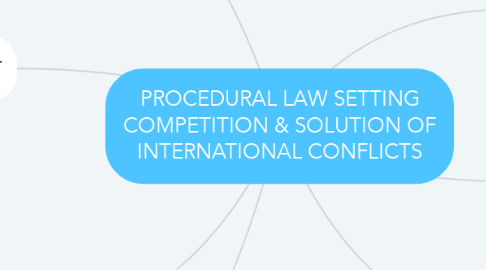PROCEDURAL LAW SETTING COMPETITION & SOLUTION OF INTERNATIONAL CONFLICTS
by Carlos Augusto

1. Subjective law
1.1. They are those that establish the limits imposed on the owner of the court at a given time, when indicating in which cases he is prevented from knowing and resolving with binding force for the parties a specific matter
2. SOLUTION OF INTERNATIONAL CONFLICTS
2.1. Positives
2.1.1. By virtue of the fact that among various courts of sovereign States, whose procedures for the establishment of jurisdiction converge in the same legal situation concrete
2.2. Negatives
2.2.1. As indicated, it arises when none of the tribunals related to the dispute are considered competent to resolve it.
3. Article 104
3.1. The Tribunals of the Federation will know: I. Procedures related to federal crimes; II. Of all the controversies of the civil or mercantile order that arise on the fulfillment and the application of the federal laws or of the international treaties celebrated by the Mexican State.
4. ARBITRATION
4.1. Jurisdictional activity which, entrusted to one or more individuals (arbitrators), who are not necessarily judicial officials, is intended to resolve a conflict of interests of an international nature.
5. JURISDICTION
5.1. It is the sovereign power of the State to know and resolve with force binding for the parties a controversy subject to prosecution or, and its case, recognize the validity and execute decisions issued by another authority jurisdiction
6. Objective law
6.1. Are the ones that set the limits imposed on the court
7. Article 106
7.1. It is the responsibility of the Judicial Power of the Federation, in the terms of the respective law, to settle disputes that, for reasons of competition, arise between the Tribunals of the Federation, between them and those of the federative entities or between the state entity and other.



